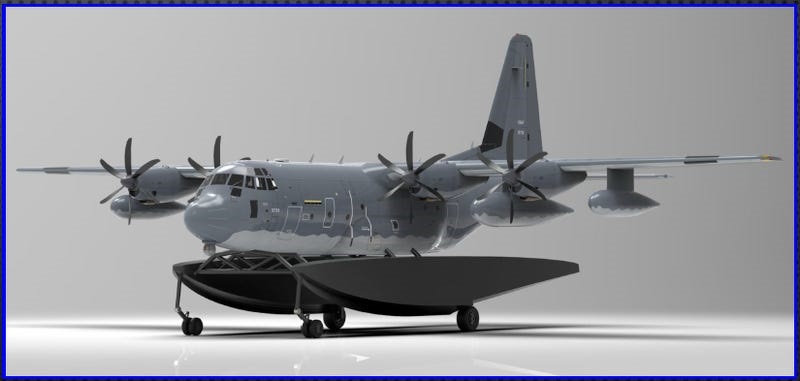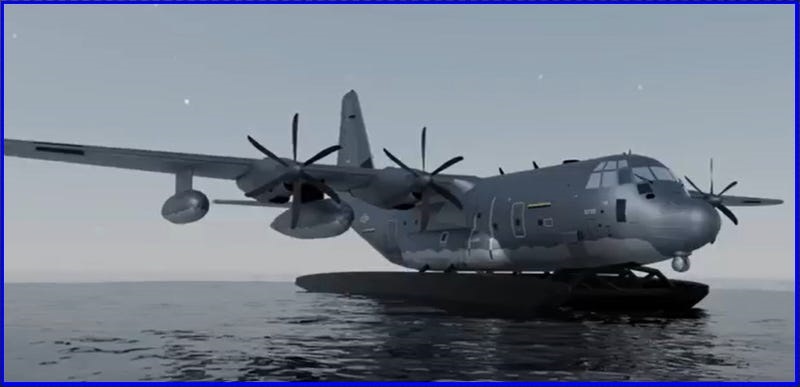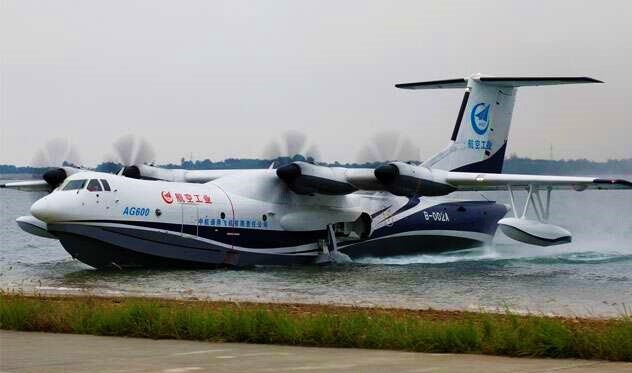


MC-130J Commando II Amphibious Capability, also known as MAC Programme !
The U.S. Air Force's Special Operations Command (AFSOC) has started working on a new capability to make the C-130J transport aircraft more suitable for expeditionary missions on watery bodies or where Runways are Scarce.
The partnership is between the " Air Force Research Lab's Strategic Development Planning and Experimentation (AFRL-SDPE) directorate" and "AFSOC" to develop the MC-130J Commando II Amphibious Capability (MAC) to improve the platform's support of seaborne special operations.
This effort comes as AFSOC increases it's focus on littoral regions where shores are abundant. The technology would also allow aircraft to be less reliant on runways.

Rendering of a twin-float amphibious modification to an MC-130J. Courtesy : US Air Force Special Operations Command
The development of a removable amphibious float modification for an MC-130J would enable "runway independent" operations, which, according to Lt. Col. Josh Trantham, deputy division chief for science, systems, technology and innovation at AFSOC, would extend the global reach and survivability of the aircraft and Air Commandos.
“This capability allows the Air Force to increase placement and access for infiltration, exfiltration and personnel recovery, as well as providing enhanced logistical capabilities for future competition and conflict,” said Trantham.
The command and its industry partners are now testing MAC prototypes via digital and virtual methods.
"The development of the MAC capability is the culmination of multiple lines of effort" , "Seaborne operations offer nearly unlimited water landing zones providing significant flexibility for the Joint Force" , "We believe MAC will be able to be used by our sister services, allies and partners on various C-130 platforms," said Trantham.
The command plans to use a five-phase rapid prototyping schedule that will allow it to conduct an operational capability demonstration in 17 months.

Rendering of a twin-float amphibious modification to an MC-130J. Courtesy : US Air Force Special Operations Command
AFSOC and private-sector representatives are already testing prototypes in the Digital Proving Ground(DPG), a virtual setting that includes virtual-reality modeling and computer-aided design — (CAD) "paving the way" for more digital simulation and testing and the use of advanced manufacturing, the release said.
"MAC is vital to future success because it will allow for the dispersal of assets within a Joint Operations Area," said Maj Kristen Cepak, AFSOC Technology Transition Branch Chief. "This diaspora complicates targeting of the aircraft by our adversaries and limits aircraft vulnerability at fixed locations."
Amphibious aircrafts are back in focus in recent years ! Several other countries like Russia and Japan still have them in their fleets, and China's development of the largest seaplane is making some good headlines.

Worth noting, China has been investing heavily in its fleet of military airlift aircrafts to enhance the long-range operations, and China's AG600 floatplane is an excellent example in this direction.
Source : US Air Force Special Operations Command.
